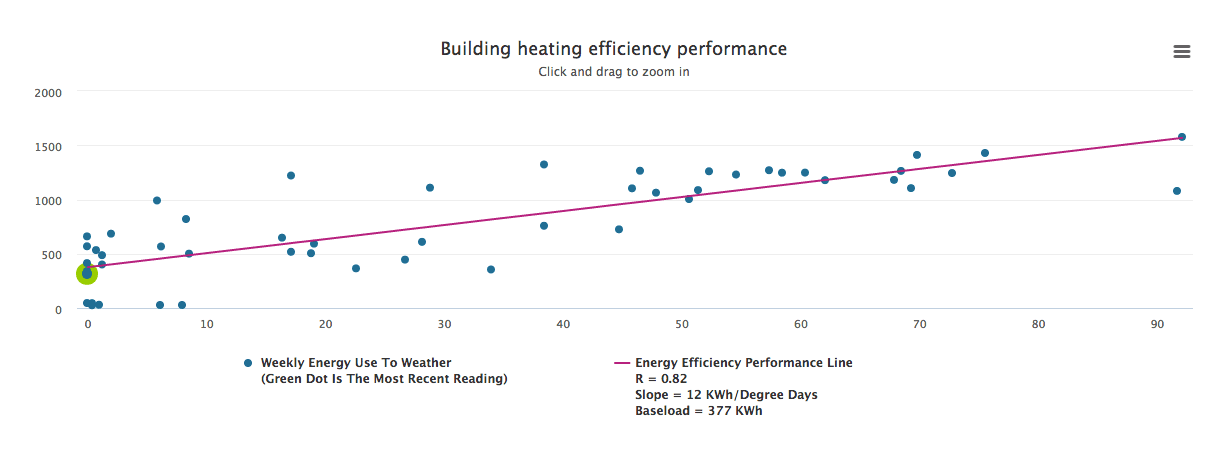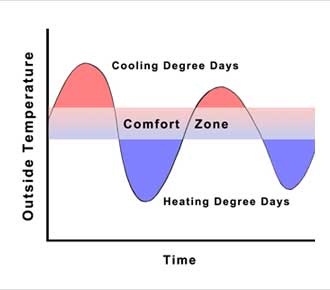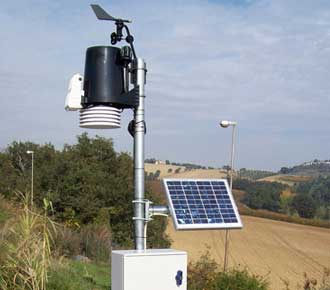3 reasons to use our degree-day data service
-
Robust and reliable data NOAA
- We provide temperature, heating and cooling degree day data calculated from the National Oceanic and Atmosphere Administration weather stations, which are correctly sited and maintained
- Heating and cooling degree data data is calculated from hourly temperature rather than min and maximum daily temperatures that can be less reliable, especially in the Autumn and Spring shoulder seasons.
Read more
-
From true degree-days experts
- Our dataset has been created by leading Degree Days expert Dr. Russell Layberry. This dataset has been peer reviewed in academic journals (see publications).
- It was developed from Russell's research at the University of Oxford's Environmental Change Institute.
-
We can save you time and effort
- Delivered into your inbox or easily accessed online we can save hours of your time and effort required in exporting, cleansing and organising lesser quality data.
- We offer cost-effective subscription solution to allow you to focus your time on analysis for your project.
What others say
-

Premier Inn
Using weather normalisation for league tables to compare and predict energy use
Pilio's advanced weather analytics enables to compare hotels, where ever they are in the UK, on a level playing field.
Dave Dunbar
Energy Manager -

Environmental Change Institute
Created by and used by energy and environmental researchers
Pilio is a wonderful example of our research being taken up in practice to promote sustainability in society
Prof. Jim Hall
Director -

Industry Green Tools
Provision of weather data for use in online energy audit tool for arts organisations
Pilio's degree days form an integral part of our service to clients. They're reliable and always bang up to date. Pilio's innovation means we also integrated a live feed of the data into our online carbon calculator tool. They made the process really easy for us, and they continue to be very responsive to our needs.
Luke Ramsay
Environmental Sustainability Manager -

Sustainable Energy Ltd
Supply of UK temperature data used to set specification of biomass boilers
Pilio's temperature data has been a crucial component in our district energy and biomass heating design work projects.
Chrissy Woodman
Company Director
Raw data subscription service
-
Suitable for
- Energy and sustainability consultants preparing building audits
- Heating and cooling technology companies (to specify appropriate equipement for customers)
- District heating projects
- Urban planning projects
-
Quick and convenient access to:
- 75 UK weather stations (also worldwide) from NOAA
- Heating (and cooling) degree days from hourly temperature
- Daily, weekly, monthly and annual degree-days
- Degree-days for a range of heating and cooling building base temperatures (10.5oC-20oC)
- 20-year average heating degree-days by weather station (for weather normalization)
- Hourly and daily temperature data
Weather-energy management products
-
Online energy management software
Pilio energy management software offers weather analysis using degree day data fully integrated in to its heating efficiency charts, providing a quick and easy way to identify potential wastage and outliers given the weather conditions. -
Bespoke reporting and software API
Utilise our bespoke data services to provide you with 20-year averages, worldwide and historic data sets, tailored to your exact requirements.
We can design a degree day data analysis API to integrate into your system or provide standalone reporting that will also you to fully integrate your estates performance given the weather.
Manage your energy with Pilio

Our Degree Day and weather publications
-
Analysis of errors in degree days for building energy analysis using Meteorological Office weather station data
Building Services Engineering Research and Technology, 30(1): 79-86
Layberry, R. (2009)
-
Improvements to the Meteorological Office equations in the computation of degree days
Building Services Engineering Research and Technology, 30(4): 357-362.
Layberry, R. (2009)
-
Degree days for building energy management - presentation of a new data set
Building Services Engineering Research and Technology, 29(3): 273-282.
Layberry, R. (2008)
More about degree days ...
Why hourly is better than a minimum and maximum temperature that are more often used elsewhere:
In order to predict and analyse the heating and cooling energy use of a building, we need to know to how much and for how long the outdoor temperature has been above or below the balance point temperature. To do this, you take the difference between external temperature and the balance point for each hour in the day. The average of these figures over the 24-hour period is known as the “degree days” for that particular day.
Traditional approach to calculating degree days
A day’s high and low temperatures were averaged to calculate degree days. Traditionally this average has been used in building energy management because this is what has been available, but it presumes no heating is necessary when the temperature is below the balance point if it is offset byanother point above the balance point. An improvement came with "Met Office equations" which approximate the degree days by assuming a standard shape of the diurnal temperature cycle. This was a great improvement but still not an accurate measure of the actual degree days.
Improved hourly approach
Both of the traditional approaches (still in wide use by other services offering weather analysis) canresult in large errors (discussed in one of our papers accessed above) Pilio calculates degree days from hourly integrals. This avoids the large errors that are introduced by other methods. It is important to reduce all sources of errors in degree day analysis, both from degree day calculations and from the collection of energy data. Failure to minimize errors can lead to false information and inappropriate building operations decisions.
Pilio uses hourly data from NOAA and UK Meteorological Office. These are the most reliable sources of hourly temperature available. This data is available from our degree day data service and also integrated into the Pilio software as weekly degree days which is superior to the more common monthly, quarterly, or even annual analysis provided by other tools.
Other factors determining heating demand
The building fabric, building controls and activities of a building will determine the heating and cooling needs.
Furthermore, the number of occupants, solar radiation through windows, operation of lighting and appliances, and other factors affect indoor temperature.
For example, a well-insulated building or a lot of people generate more heat as there are other heat sources these can offset how much you need to heat a building.
Buildings require HVAC heating or cooling not only to moderate the outdoor temperature but also the heat they generate. The indoor temperature from which point the building needs HVAC heating or cooling is called the “base temperature”.


